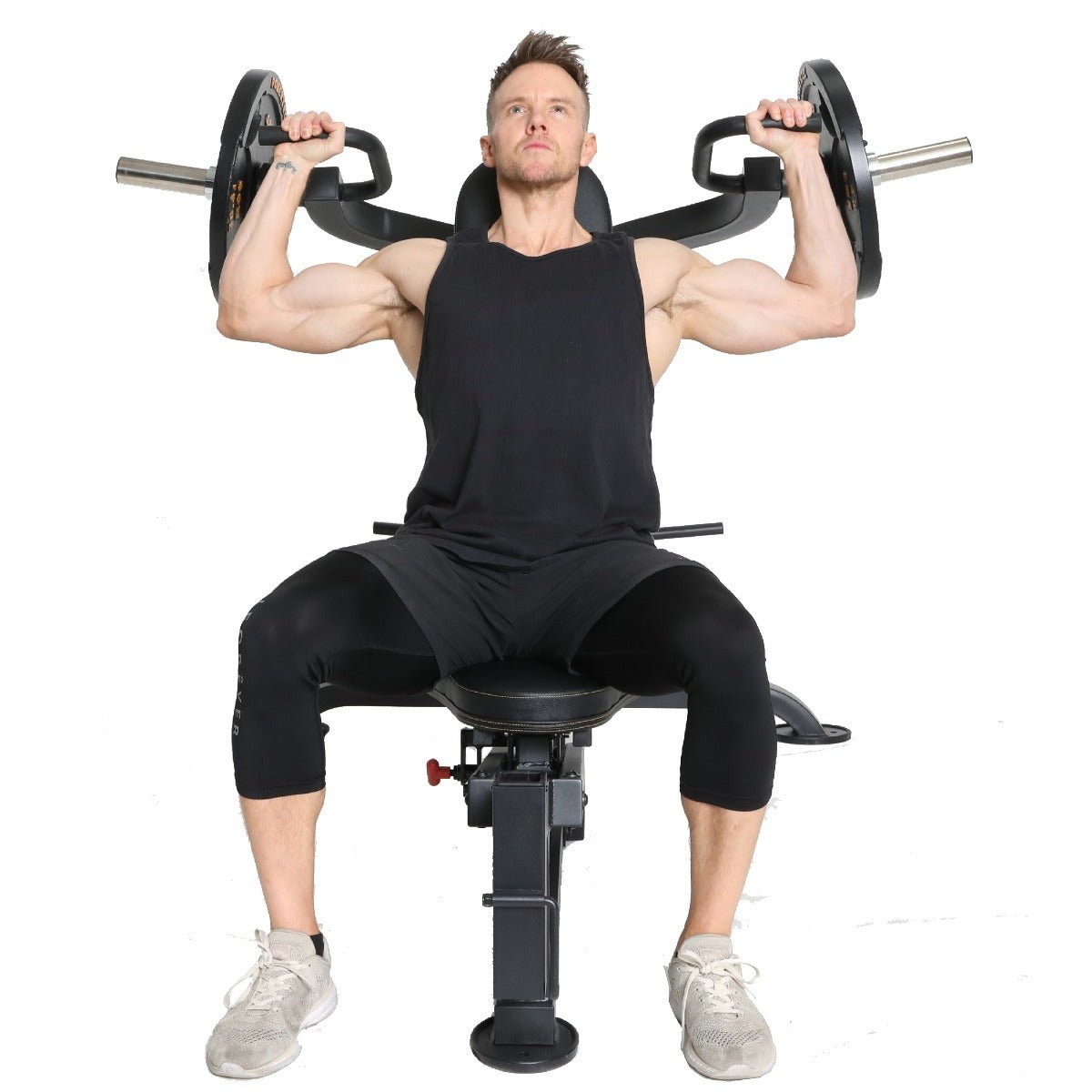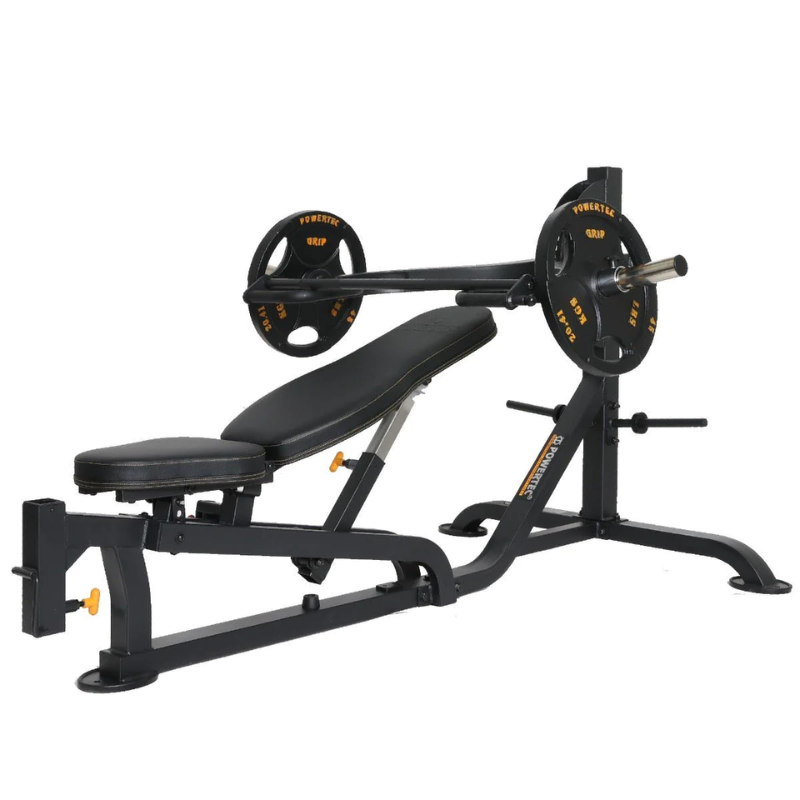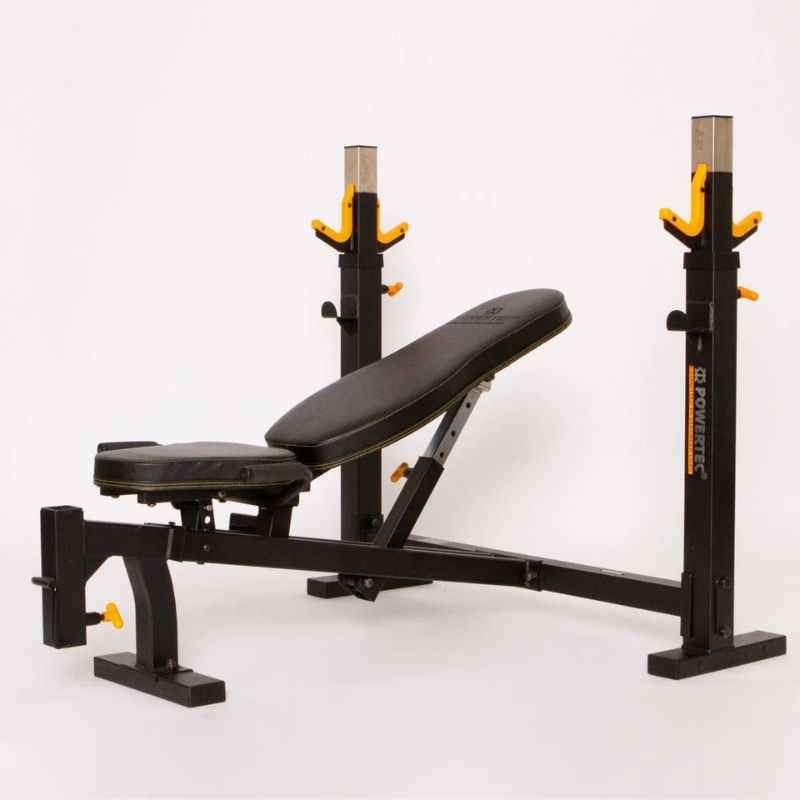The shoulder press is a cornerstone exercise in upper body strength training.
When performed properly, it engages a wide range of muscles from your shoulders and upper back to your arms.
However, to unlock its full potential and maintain safety, the shoulder press must be performed correctly.
The Importance of Shoulder Press in Strength Training
The shoulder press targets multiple upper body muscle groups at once, engaging the front and side deltoid muscles in the shoulders. It also activates the triceps, upper pectorals, and trapezius.
This makes it an excellent compound exercise for developing overall upper body strength.
Shoulder Press Benefits
Including shoulder presses in your workout routine can help athletes build bigger, stronger shoulder muscles, and improve their upper body's pushing strength.
Anatomy of an Effective Shoulder Press

Performing the perfect overhead press requires a good balance of posture and technique.
Let's dive into the shoulder press essentials so you can maximize the benefits while mitigating the risks.
Proper Shoulder Press Posture and Technique
Here are the steps for performing a shoulder press exercise:
-
The exercise begins in an upright, seated position.
-
With your core engaged for stability, your hands should grip the handles or weights at shoulder width with your palms facing forward.
-
Make sure to keep your elbows forward (forearms vertical) and slightly in front of the bar.
-
As you press the leverarms or bar overhead, keep your back straight - no leaning or arching.
-
Press the weights overhead. The handles, your wrists, elbows, and shoulders should be aligned at the top of the movement.
-
The descent of the weights should be controlled and steady, with your shoulders and wrists stable throughout the movement.
-
Return the weight to the starting position and repeat for the desired amount of reps.
Common Shoulder Press Mistakes to Avoid
When it comes to performing the shoulder press, there are a few things that could limit your results or even cause injury:
-
Leaning back: This can place unnecessary strain on your spine. Work to keep your back straight and upright throughout the movement.
-
Flaring out your elbows: This can lead to shoulder discomfort or injury. Keep your elbows pointed forward, aligned with your body.
-
Not performing a full rep: For maximum muscle engagement, press the weight up until your arms are fully extended and bring the weight down to the starting position for each rep.
-
Using momentum rather than controlled muscle strength: This can result in improper form and potential injuries. Make sure you're lifting and lowering the weight in a controlled manner.
-
Allowing your shoulders to round: This can compromise your posture and lead to injuries. Keep your shoulders back and down, maintaining a strong, stable position.
The Best Equipment for Shoulder Press Exercises
Powertec Workbench® Multipress

The Workbench® Multipress is an exceptional tool for performing shoulder presses and other upper-body exercises.
The Multipress provides:
-
An adjustable bench with multiple incline settings to adapt to various workout requirements.
-
Isolateral lever arms that help athletes maintain a natural range of motion for a free-weight feel.
-
Built-in safety stops for safe and secure solo training.
-
A robust design that helps athletes maintain a safe and correct shoulder press technique.
Powertec Workbench® Olympic Bench

The Workbench® Olympic Bench is the ideal platform for mastering the shoulder press technique and other shoulder exercises.
Some key features include:
-
Adjustable flat, incline, and decline positions to target different muscle groups.
-
A sliding seat carriage that allows pressing at various angles for comprehensive muscle engagement.
-
Dual bar catches for easy access and safety during workouts.
-
A high weight capacity that supports progressive overload for continuous strength improvement.
Frequently Asked Questions
How can I improve my shoulder press form?
To improve your shoulder press form, take a video of your presses. This will help you check for deviations. Alternatively, a personal trainer can help you with your form. It's okay to reduce the weight while you are working on form and increase it again when you are more comfortable with the movement. One good equipment option is the Powertec Workbench® Multipress, which will provide a smooth pressing station so that you can focus more on posture and mechanics.
How often should I perform shoulder presses?
To build bigger, stronger shoulder muscles, we recommend performing dedicated shoulder press workouts at least twice per week. The deltoids are complex and require frequent stimulation to grow. Be sure to allow at least 48 hours of recovery time between heavy shoulder press sessions to avoid overtraining and injury. Combining the proper frequency, recovery, and variation will safely get you the shoulder strength gains you want.
Achieving Your Fitness Goals with Powertec
At Powertec, our mission is to help you build a stronger, healthier body to reach your fitness goals. We believe that everyone should have access to gym-quality equipment in their own homes.
Our innovative Workbench® line enables safe, effective training.
With the right mix of education, motivation, and Powertec equipment, you can achieve the shoulder strength and physique you want.
Get in touch with us now to learn about FREE U.S. shipping and discover how we can help you accomplish your health and fitness goals.
Our team is ready and able to help you achieve new personal bests!



Leave a comment